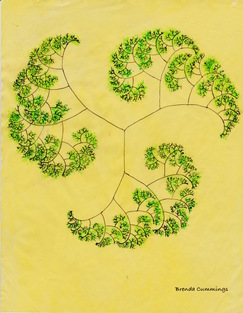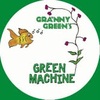
The best thing about living in the suburbs is being surrounded by trees. With an exception or two, most people value trees here, and most towns have shade tree commissions, as well as environmental commissions to keep an eye on tree planting and removal. But in many urban areas, trees have a harder time. Tending and planting trees is expensive, so despite the long-term benefits, trees aren’t always prioritized.
There has been a recent proliferation of scientific research confirming the benefits of urban trees. They provide shade, they pull pollution out of the air, they assist in storm water retention and they drive up real estate values, but in too many areas, trees are declining.
It’s difficult in many cities to keep up with dying and fallen trees, but another problem facing some urban areas is a multiplying influx of invasive species. Keeping up with diseased trees is an obstacle. Beetles, moths, weevils and adelgids and fungi of several kinds have contributed to the demise of millions of trees over the years. According to new studies, city trees are often not diverse enough to battle all the new diseases. If there is only one kind of tree planted, the trees are that much more vulnerable.
One of the ways tree-killing insects and diseases have spread is through firewood. Insects often live in felled wood, but they don’t move great distances on their own. When firewood with insects hiding inside is moved, it can often mean a leap of hundreds of miles. It only takes one or two tiny insect eggs, or a few microscopic fungus spores to spread contagion.
Some packaged, heat treated firewood sold by retailers is considered safe to move, but the best bet is to use firewood that is from the area in which you plan to burn it. don’tmovefirewood.org is a great resource for all kinds of information about firewood and tree-killing invasives.
New York City’s tree planting efforts have made the city healthier and more attractive, and for those who can still afford it, it’s a beautiful place to live. But in Jersey City, just across the river from NYC, trees are tweeting about what it’s like to be a tree. #Tree Speech is a Jersey City campaign to raise public awareness about the many sustainability issues facing the city, including a seriously jeopardized tree canopy. Twenty percent of Jersey City’s trees are dead or dying.
Environmental artist, Anne Percoco was interviewed by The Jersey City Independent, and she believes that #Tree Speech is “a kind of whimsical experiment in empathy. If we can converse with trees, how will our actions towards them and thoughts about them change?” It sounds like a great idea to me.
They have assigned names and Twitter accounts to selected trees, and the trees have now joined the Twittershpere. Percoco says that Twitter is the perfect vehicle for giving voices to trees, and at first she was going to start the campaign on her own. She found out, however, that Sustainable Jersey City is leading several tree-related initiatives with the NJ Treekeeper’s Workshop and the OpenTreeMap.org tree inventory, so she began working with them.
According to Percoco, “#Tree Speech is also a metaphor for the wood wide web, an underground fungal network that trees use to share information and resources. And I love that Twitter’s logo is a bird.”
The #Tree Speech campaign is running through September, but participants are encouraged to keep it going as long as they can.
Maybe it should be a global campaign.
There has been a recent proliferation of scientific research confirming the benefits of urban trees. They provide shade, they pull pollution out of the air, they assist in storm water retention and they drive up real estate values, but in too many areas, trees are declining.
It’s difficult in many cities to keep up with dying and fallen trees, but another problem facing some urban areas is a multiplying influx of invasive species. Keeping up with diseased trees is an obstacle. Beetles, moths, weevils and adelgids and fungi of several kinds have contributed to the demise of millions of trees over the years. According to new studies, city trees are often not diverse enough to battle all the new diseases. If there is only one kind of tree planted, the trees are that much more vulnerable.
One of the ways tree-killing insects and diseases have spread is through firewood. Insects often live in felled wood, but they don’t move great distances on their own. When firewood with insects hiding inside is moved, it can often mean a leap of hundreds of miles. It only takes one or two tiny insect eggs, or a few microscopic fungus spores to spread contagion.
Some packaged, heat treated firewood sold by retailers is considered safe to move, but the best bet is to use firewood that is from the area in which you plan to burn it. don’tmovefirewood.org is a great resource for all kinds of information about firewood and tree-killing invasives.
New York City’s tree planting efforts have made the city healthier and more attractive, and for those who can still afford it, it’s a beautiful place to live. But in Jersey City, just across the river from NYC, trees are tweeting about what it’s like to be a tree. #Tree Speech is a Jersey City campaign to raise public awareness about the many sustainability issues facing the city, including a seriously jeopardized tree canopy. Twenty percent of Jersey City’s trees are dead or dying.
Environmental artist, Anne Percoco was interviewed by The Jersey City Independent, and she believes that #Tree Speech is “a kind of whimsical experiment in empathy. If we can converse with trees, how will our actions towards them and thoughts about them change?” It sounds like a great idea to me.
They have assigned names and Twitter accounts to selected trees, and the trees have now joined the Twittershpere. Percoco says that Twitter is the perfect vehicle for giving voices to trees, and at first she was going to start the campaign on her own. She found out, however, that Sustainable Jersey City is leading several tree-related initiatives with the NJ Treekeeper’s Workshop and the OpenTreeMap.org tree inventory, so she began working with them.
According to Percoco, “#Tree Speech is also a metaphor for the wood wide web, an underground fungal network that trees use to share information and resources. And I love that Twitter’s logo is a bird.”
The #Tree Speech campaign is running through September, but participants are encouraged to keep it going as long as they can.
Maybe it should be a global campaign.

 RSS Feed
RSS Feed
